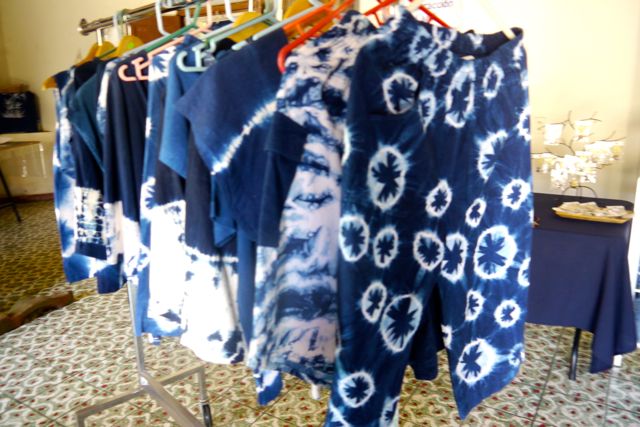When synthetic indigo came to market at the end of the 19th century, it virtually wiped out the indigo farming industry worldwide. But one lady singlehandedly decided to keep indigo alive in her country of El Salvador.
In Central America during the Spanish colonial period, indigo was produced on a massive scale from the 1600’s until the 19th century, when it was replaced as a cash crop by sugar and coffee. During El Salvador’s 1980-1992 civil war, the family farm of Rhina de Rehmann, was occupied by the guerillas (revolutionary group) who threw the family out of their house but allowed them to still use the land for farming. When Rhina took charge of this land, she decided she wanted to provide employment to the rural workers and recover her agricultural heritage. She also wanted to do this the organic way. Having no formal knowledge of organic farming, she traveled to other farms around the world, took lessons, met experts, and brought back these practices to her organic indigo farm in El Salvador, called Νacimientos.

How is indigo made?
Indigo leaves are handpicked by local farmers. They are then fermented in large tubs of water, covered with heavy logs of wood. Once the water begins to boil, it changes to blue color. The ink is then transferred to another tub, where it is manually agitated using paddles. Indigo sediments sink to the bottom and the water is drained off to another tub. From here it is collected in bottles and sent to fabric makers for commercial use.
 What is organic indigo?
What is organic indigo?
Νacimientos specializes in the production of powder of high quality organic indigo with a percentage of between 50-55% Indigotine. They do this with utmost self sufficiency. All water, soil, fertilizers, etc. originates and is used from within the farm. There is no electricity and no machinery here. Irrigation is done using the springs of water on the farm. Fertilizer comes from the compost station that is carefully monitored. Neem trees are planted all along the indigo bushes and act as natural insect repellants. There are also hibiscus and cashew trees on the farm, that help with soil rotation.
How can you get involved?
Rhina welcomes volunteers and tourists who want to learn about organic indigo production. She gives lessons in how to make indigo, how to dye using indigo and how to organic farm. You can tour the farm in an afternoon or stay for a few weeks. Νacimientos is located 45 minutes from the city of El Salvador. It is also 10 kilometers from the archaeological ruins of Cihuatán and 17 Km from the capital city of Suchitoto, two of the must see sites when visiting El Salvador.
 Watch video of owner of one of the two organic indigo farms in the world, Rhina de Rehmann talking about how she inherited this piece of land and decided to convert it into a place where she can provide employment to El Salvadorians during the civil war.
Watch video of owner of one of the two organic indigo farms in the world, Rhina de Rehmann talking about how she inherited this piece of land and decided to convert it into a place where she can provide employment to El Salvadorians during the civil war.